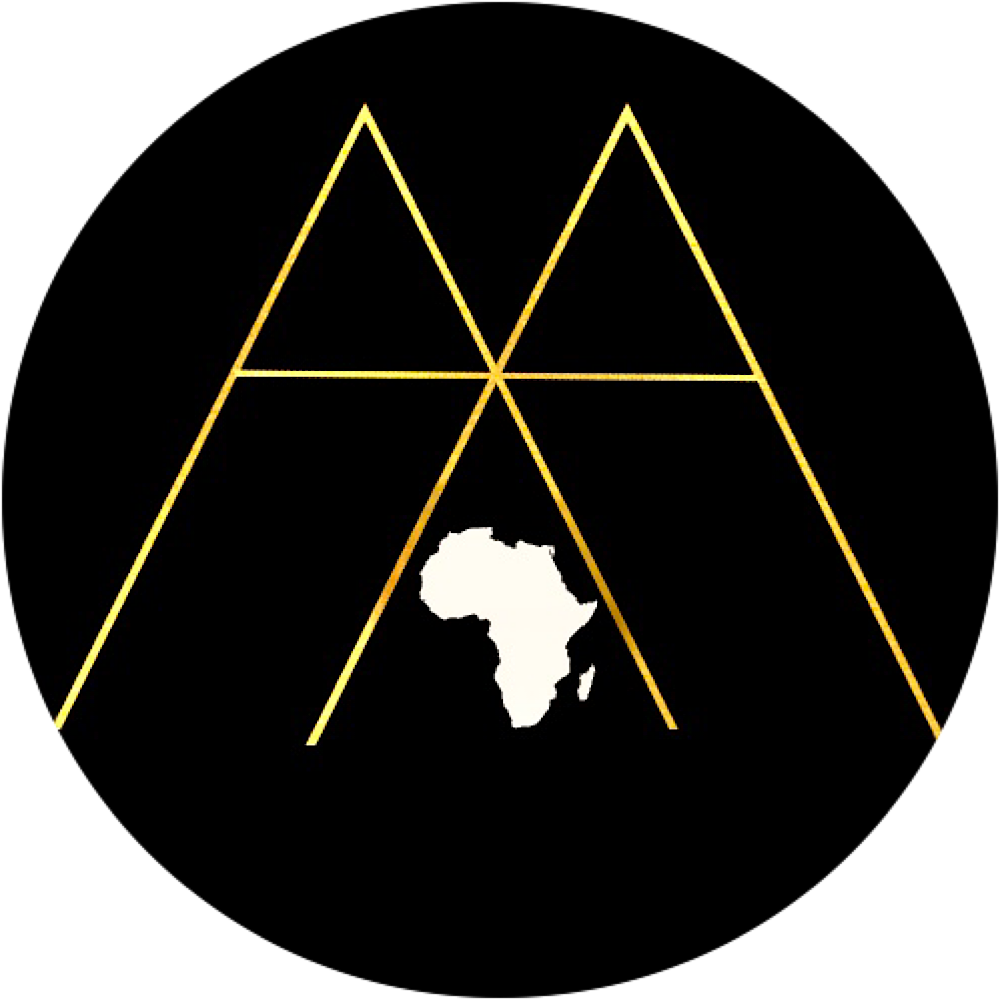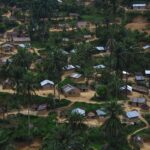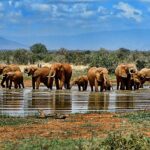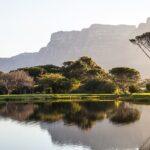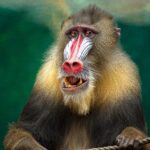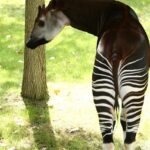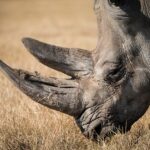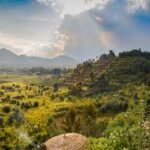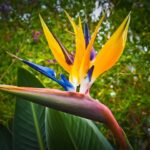So we all know that nature and biodiversity are important. We wouldn’t be here without it, right?
But did you know that there are only 17 countries in the whole world classified as ‘megadiverse’?
What’s a megadiverse country?
Countries classified as megadiverse, are those that hold the majority of the earth’s biodiverse species.
These countries, which only cover 10% of the Earth’s surface put together are home to more than 70% of the planet’s biodiversity.
Africa is home to 3 megadiverse countries making it the second continent most megadiverse continent.
So let’s dive into these countries to understand why they’re so special.
The Democratic Republic of Congo
The Democratic Republic of Congo, also known as the DRC is often referred to as the richest country in the world due to its abundant natural resources, so it’s no surprise that this country is classified as a megadiverse too.
But let’s dive into some of the exact reasons why it’s so diverse;
Did you know:
The Congo is home to more than 400 mammal species, many of which are found nowhere else in the world!?
In fact, in 2012, a new monkey species called the Leslua was discovered in the Congo that quickly became famous for its human-like face and its blonde hair.
The Congo River, which runs through DR Congo, is Africa’s second-longest river after the Nile. It is also the world’s deepest river.
The Congo River is well known for its diversity in fish.
Nearly 700 species have already been discovered with 80% of them only being from the Central African region.
Not only is congo home to the world’s deepest river, but it’s also home to the world’s second-largest rainforest, the Congolese Rainforest.
This rainforest stretches across six other African countries (Cameroon, Central African Republic, Republic of the Congo, Equatorial Guinea and Gabon) and is home to over 10,000 plant species (which 30% are only found in Congo), 400 mammal species, 1,000 bird species and 700 fish species. I know right!
Wow!
Congo is also home to Virunga National Park which is Africa’s oldest national park and a UNESCO World Heritage site. This national park is home to a plethora of wildlife and natural landscapes including mountain gorillas and chimpanzees.
So why does Congo need to be protected?
Well as mentioned above the country is home to vast natural resources including cobalt, copper, gem diamonds, gold, silver, zinc, uranium, coal and timber.
These if not protected would begin to diminish at a faster rate.
Deforestation:
Deforestation is a big problem facing the country as not only are plants suffering but the animals that live there too.
Already Congo has seen around 60% of its forest elephant population drop due to their loss of shelter.
Some people are even estimating that in less than 80 years’ time the amazing forests in this country will be gone.
Civil war;
Though the civil war officially ended in 2003.
The country is still very divided with reports of attacks happening frequently.
This presents a problem for the biodiversity here as the forests are often used as a fighting/hiding ground, therefore disturbing the peace of nature.
Madagascar
Madagascar is a popular holiday destination and it’s not hard to see why so many people are attracted to this beautiful island country.
With so many animals such as the extinct dodo bird and the famous Madagascar lemur being found only in this country, Madagascar offers it all.
So why is this country megadiverse?
Well, Madagascar is home to over 9,500 Vascular plants, 160 mammals, 260 birds, 300reptiles and 234 amphibians.
The town of Toliara, in south-west Madagascar, home to some unique flora life as its surrounded by lagoons, mudflats, freshwater marshes and, Didierea (which are huge plants only found in Madagascar).
Why does Madagascar need to be protected?
Though Madagascar has undeniable beauty, it’s still one of the world’s poorest countries and this affects nature.
The country relies heavily on tourism and offering people a glimpse of paradise but this comes at a cost to the wildlife and sealife.
Madagascar’s forests are dropping at an alarming rate. Before their forests covered about 80% of the country and now that number is down to a shocking 12%!
Reports have shown that that deforestation in the country’s existing forest is at 1-2% annually!
It’s no surprise then that more of the country’s species are becoming endangered.
This also presents problems for Malagasy (People from Madagascar) as more than 18 million of it’s them are dependent on the biodiversity in the country with 80% being entirely dependent on natural resources.
So if the plant and sea life die, what will happen to the people?
South Africa
South Africa is often the country where people think to go for adventure or relaxing on the beach. But little do people know this country has much much more to offer.
Not only is this country’s population megadiverse but the country itself is also classified as ‘megadiverse’ due to its plethora of plant life, wildlife, and sea life.
Don’t believe me?
Well, South Africa’s, Cape Floral Kingdom was ranked one of the best in the world! Also, did you know that South Africa has the third-highest level of biodiversity in the world and is home to about 10% of the world’s plant species, with nearly 20 000 different types such as the world’s smallest succulent plant and the baobab tree, which is the world’s largest.
South Africa is home to over 6000 plant species in the Succulent Karoo and 40% of these are found nowhere else on earth.
South Africa is also home to some amazing scenery such as the Tugela Falls (the second-highest waterfall in the world), Blyde River Canyon (the third largest canyon in the world), and Lake Fundudzi in Venda (possibly the world’s only inland freshwater lake formed by a landslide) which are all breeding grounds for beautiful flora.
Not only is this country’s plant life amazing, but the wildlife is too! South Africa is home to Africa’s largest population of Rhinos, but other wild animals such as elephants, okapis, aardvarks, and more call this country home.
Why does South Africa need to be protected?
Despite the best efforts from the government to protect the diversity of the country, many threats such as poachers are still a problem for the country.
Poachers are the number one threat to Africa’s rhinos and with South Africa being their largest home, it’s not hard to understand why these animals need to be protected before they become extinct.
Speaking of extinction, the plant life is being affected too with 36 South African plant species already confirmed extinct and a further 14% of all plant species threatened with extinction. And over 24,000 critically endangered.

So what can we do to help or protect these countries?
I think as people we can often forget how powerful and influential our voices can be but if we don’t want to lose these amazing nature hubs and global warming to occur at a quicker rate, we must actively make a change now.
We need to care about our environment and start giving back to it.
Well, a great and one of the easiest ways to do this is to realise the power you have as a customer.
Often at times when the demand for an item reduces, so will the supply.
So look at your lifestyle and think of all the natural resources used to make the things you have and start consciously purchasing things that are made in more sustainable, earth-friendly ways
A second way we could do this is by fighting for change.
Now we don’t have to be flying to forests, creating human chains to stop deforestation. But it’s important we speak up about these issues whether than be by signing petitions or using our platforms especially social media to call out the destruction of our planet.
Your voice matters, so use it to invoke the change you want to see in the world.
A third way we could all make a change is by providing financial support to organisations working to preserve and protect these areas.
If you plan to do this, please make sure you do thoroughly research these organisations before giving money to them.
With these little steps I truly do believe that we can all make a change to the world we are living in and create a better more eco-friendly one.
